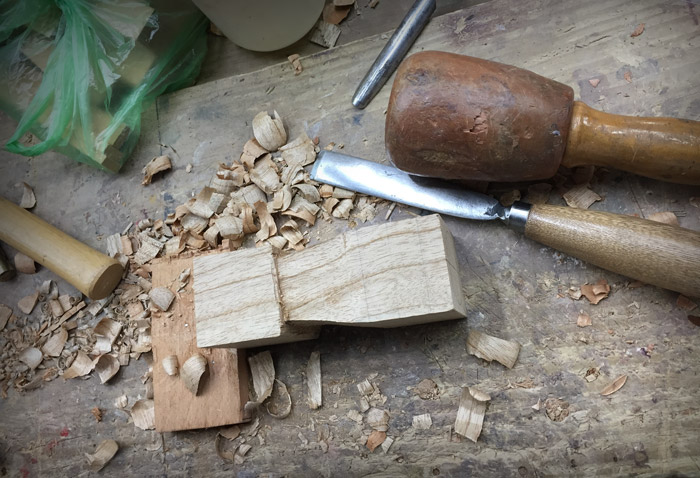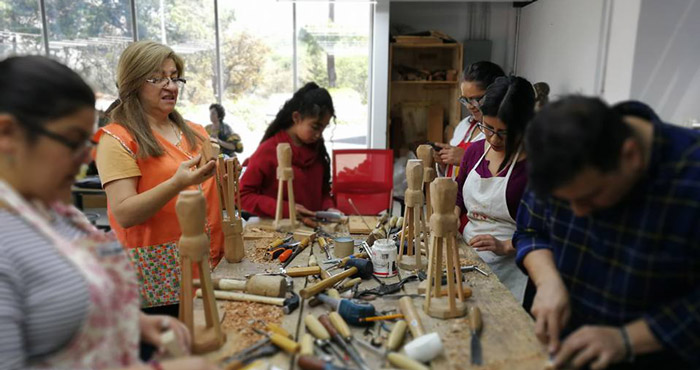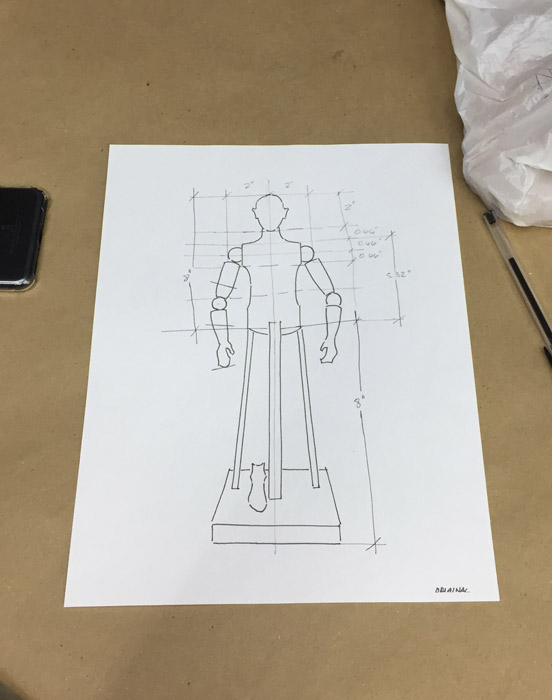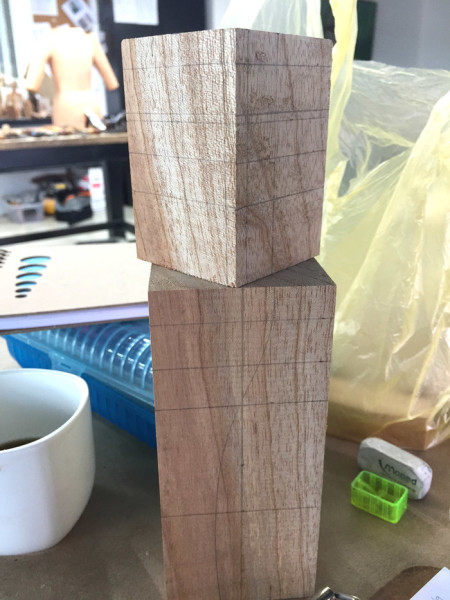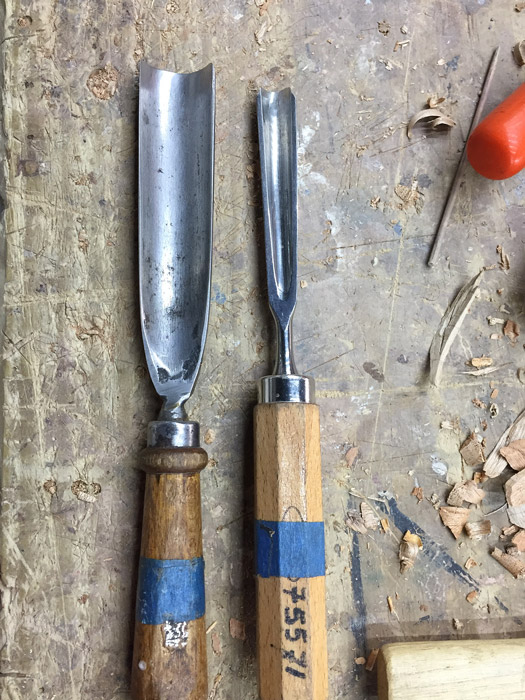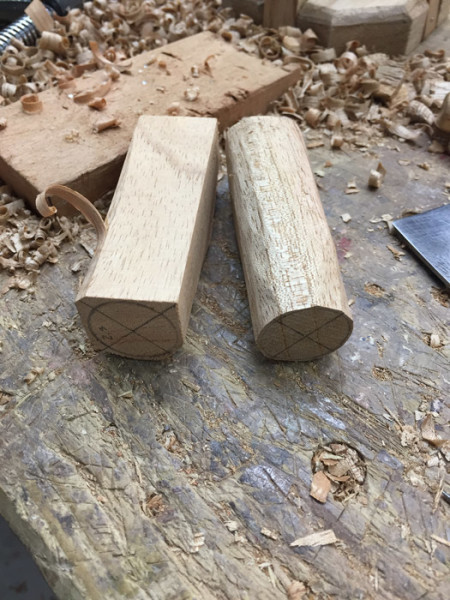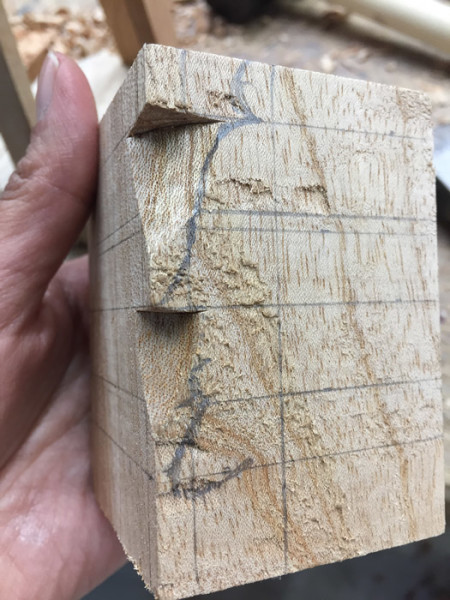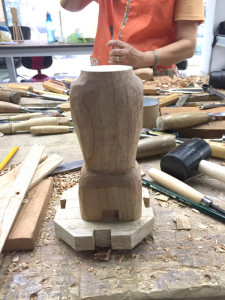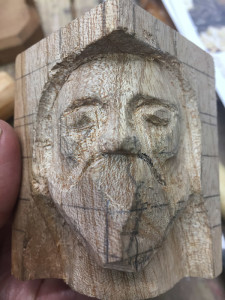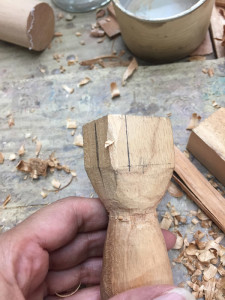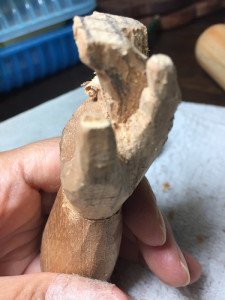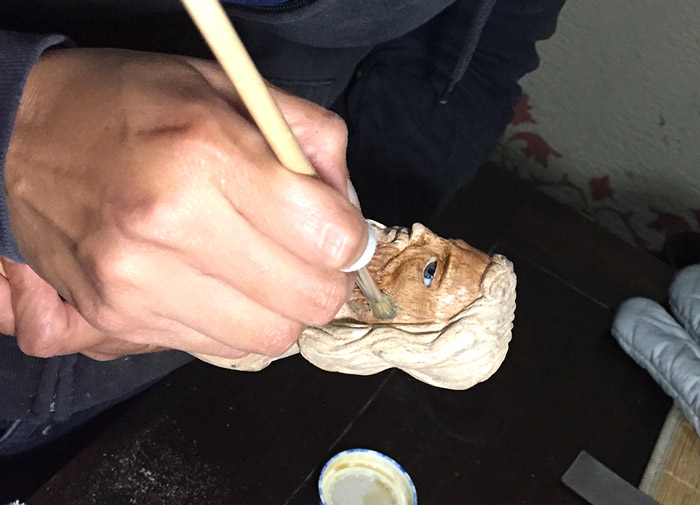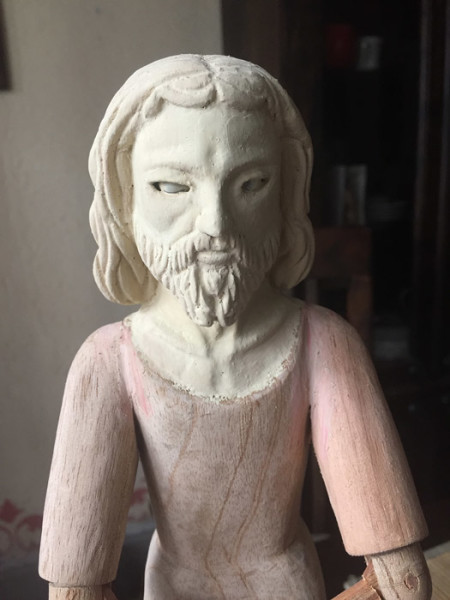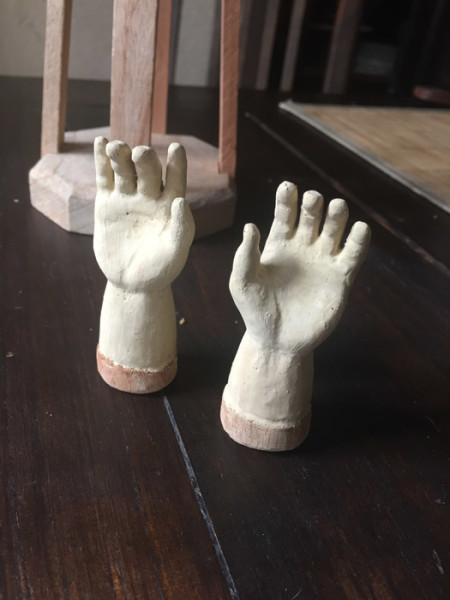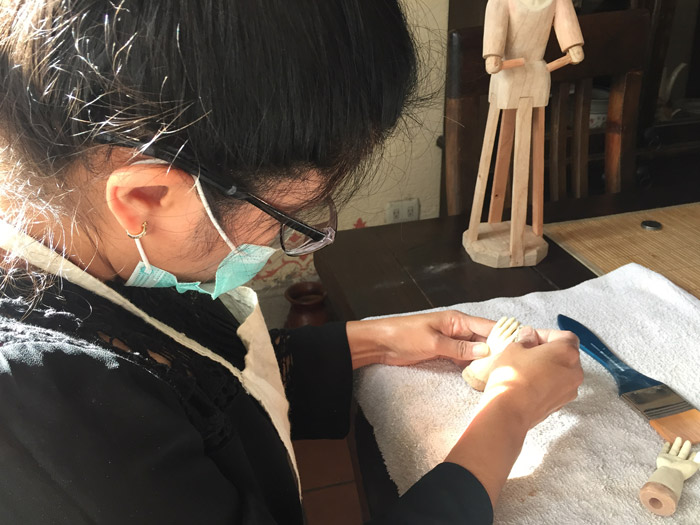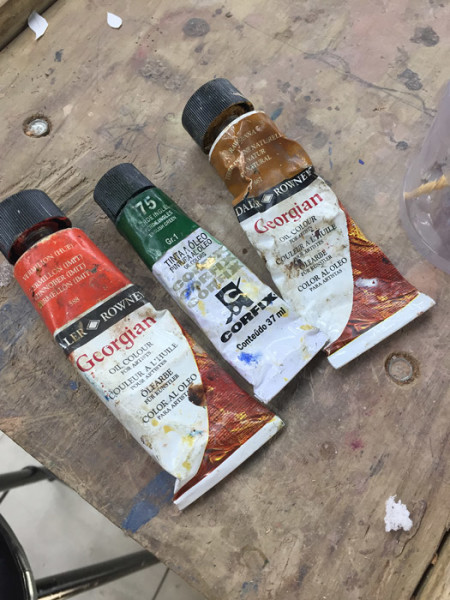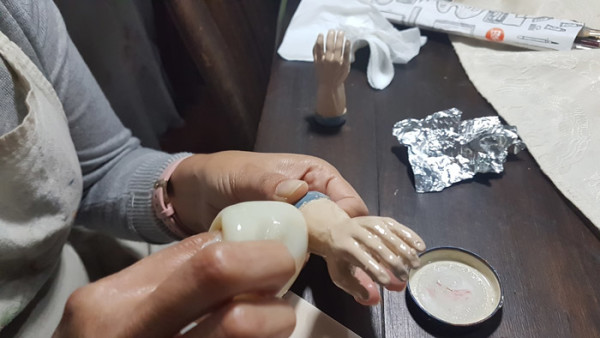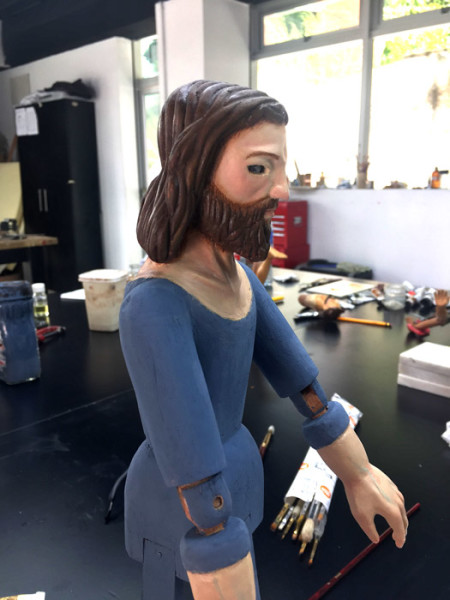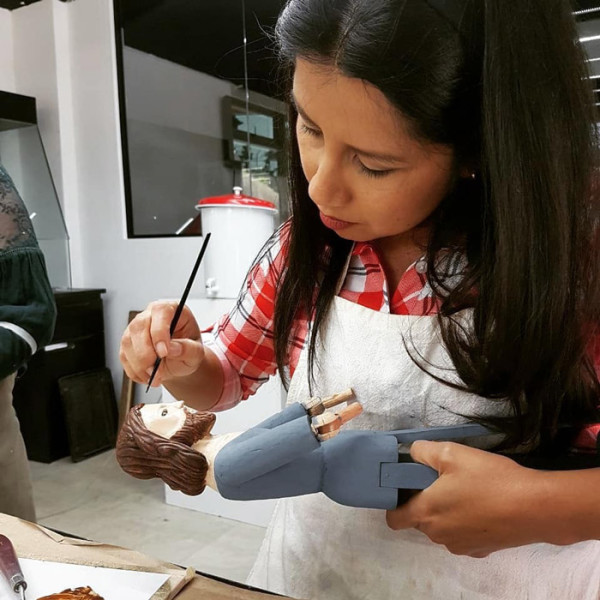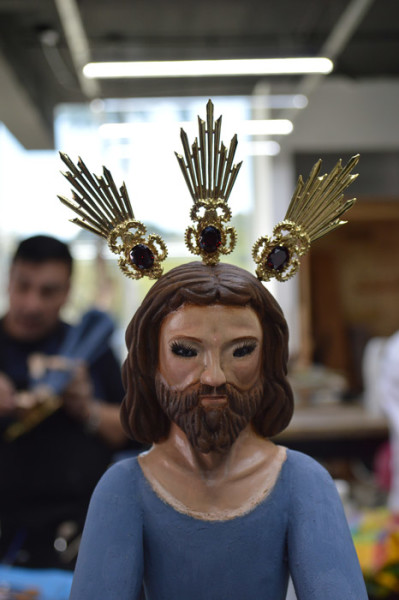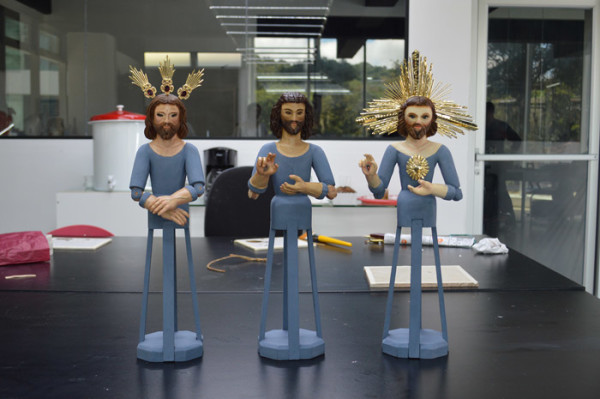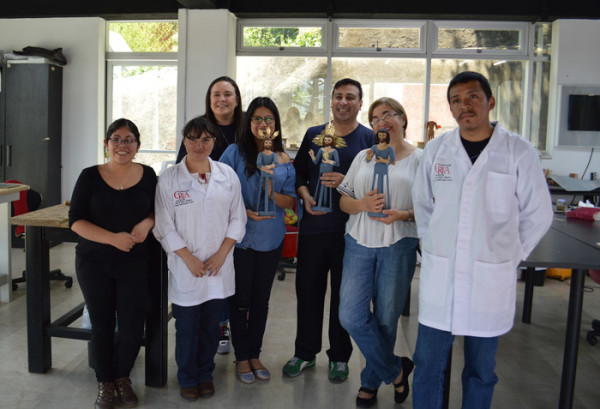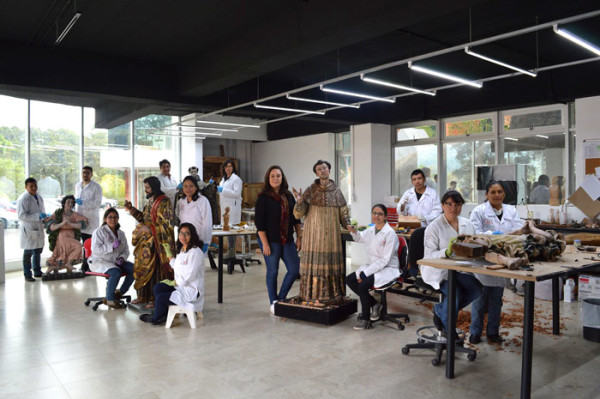Workshop Sculpting a Religious Image Colonial Style
Article by Hadazul Cruz—artist and student at CREA, outlining the Talla en Madera (wood carving) workshop, and the following Encarnado (polychrome) workshop.
When the Spaniards arrived in Guatemala in 1524 they brought religion, arts, and culture with them. Since they didn’t speak native languages a simple way to evangelize the local population was through art. Thus, talented sculptors, painters, and other artists came to the New World with this single purpose.
In time indigenous artists took up their tools and joined Spanish artists in creating some of the most beautiful works of art in the New World that have survived the ravages of time.
Religious art is still of great importance, especially in Guatemalan culture. Centro de Rescate (CREA) and Estudio y Análisis Científico para el Arte recognized the need to establish conservation and restoration to promote formal academic research and scientific analysis of the cultural heritage in Guatemala.
CREA is also a study center that offers workshops for new artists who learn how to create colonial art in the traditional way using the same materials artists used almost 600 years ago.
First step, student´s learn how to calculate the measurements and proportions for the sculpture.
—–
Measurements are drawn on the pieces of wood.
—–
“Gubias” (gouges), instruments that are used to carve have changed very little over the centuries
—–
Little by little the square shape begins to disappear.
—–
And the shape of the body appears.
—–
With the sculpting process done, the polychrome process begins. First step, add a couple of coats of “Cola de Res” (beef cartilage boiled in water until it becomes a kind of varnish) to seal the wood pores.
—–
After applying “Cola de Res”, the “Base de Preparación” is applied. “Base” is made of calcium carbonate, known in the world of art as “Blanco de España” and “Agua Cola” (cola de res diluted with water).
—–
After applying the “Base de Preparación” the pieces need to be polished in order to get a porcelain texture, for that, a fine sandpaper is used.
—–
The piece is then colored using traditional oil paints.
—–
In order to make the skin look very soft, the brush print is “erased” using a ram’s bladder to polish the piece. Ram’s bladder properly curated can last for several months.
—–
Little by little, the details of skin and hair color begin to appear.
- photo courtesy of CREA
—–
Final details such as eyelashes, eyebrows and “Pátina” (patina) are added. Since the image will be robed, it is not necessary to elaborate on the whole body in detail.
—–
Each artist brings that personal touch that gives uniqueness to each piece.
—–
Students and teachers at the end of the course, left to right: Gabriela Chávez Castillo (Paper Laboratory Coordinator); Iris Azucena Amésquita (Easel Painting Laboratory Technician); Ana Lucía González Muñoz (CREA Director); Hadazul Cruz (student); Pablo Pacheco (student); Sulema de Ávila (student); Guadalupe Laz, Sculpture Laboratory Technician.
—–
The Center of Rescue, Study and Scientific Analysis of Art (CREA), specializes in the conservation and restoration of cultural heritage artifacts and historical artwork. It offers services to communities, individuals and institutions with private heritage collections.
This work is done at the physicochemical laboratory and restoration laboratories of paper, easel painting and sculpture. The main focus is the development of new research protocols, application of new technologies and materials, and innovation of traditional conservation and restoration processes.
More Information about CREA :
Tel: +502 5440-5581Campus Médico San José,
Km. 28.5 carretera a Bárcenas Santa Lucía Milpas Altas, Guatemala or visit:facebook.com/CREArozasbotran or instagram.com/fund_crea
Suggested video link: youtube.com/watch
REVUE magazine article and photos by Hadazul Cruz
